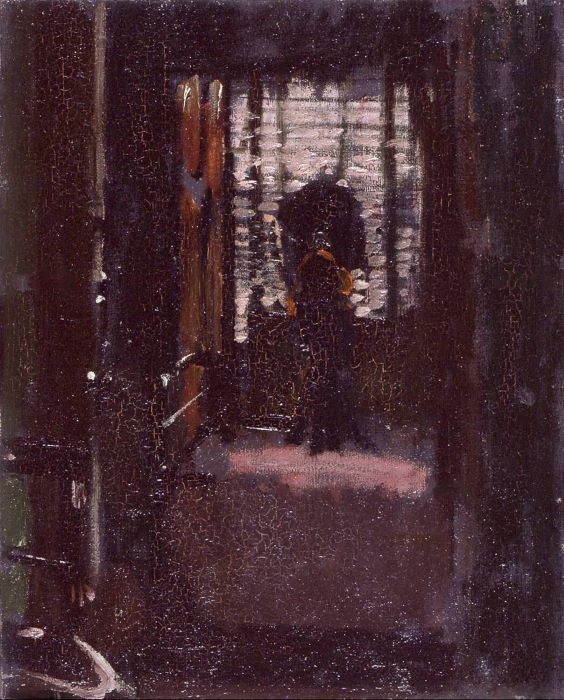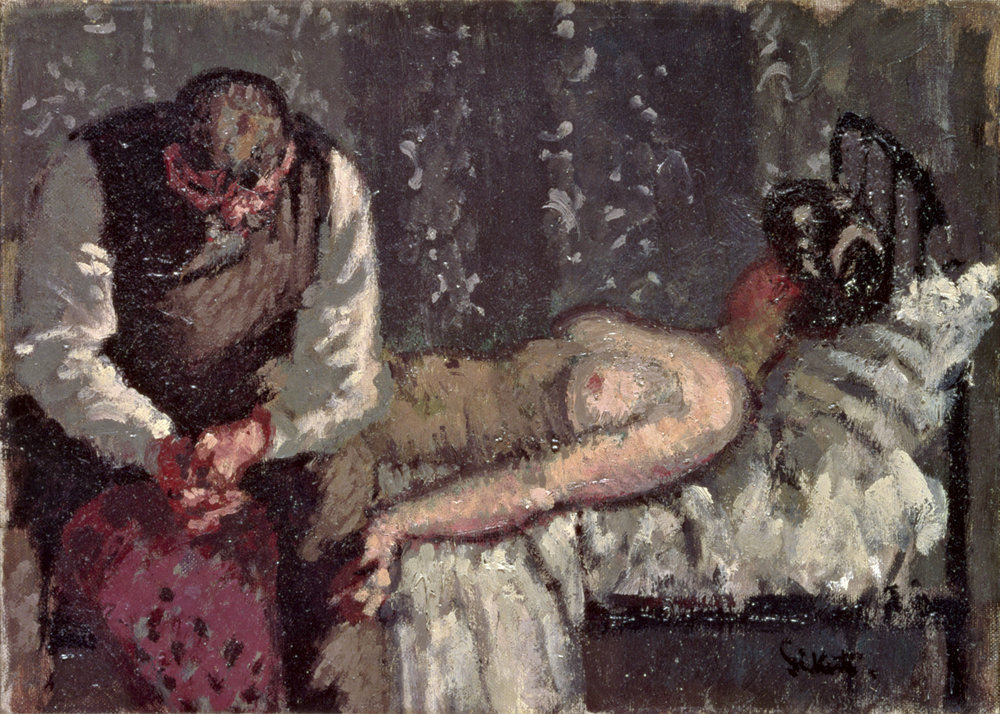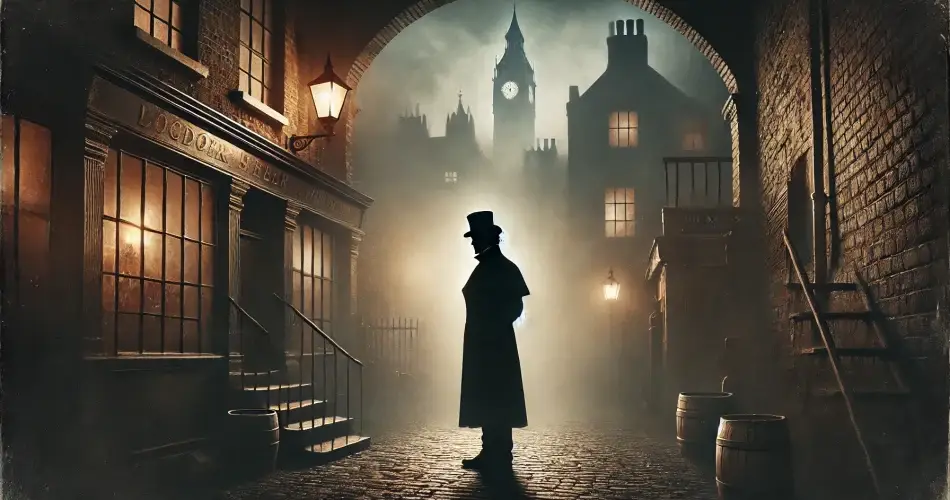The mystery of Jack the Ripper is perhaps one of the most famous unsolved crimes in English history. Jack the Ripper was an elusive serial killer believed to be responsible for the murder of five women in the White Chapel district of London in 1888.
The case is particularly fascinating because of the inability of the police to identify any suspect for the grusome murders. However, there have been many speculations about who the serial killer might be.
One of the main suspects often pointed out is 19th-century painter Walter Sickert. So, could an acclaimed artist be behind one of the most notorious murders in history?
Who Was Walter Sickert?

Walter Sickert was a German-born British painter born to a family of painters. Although he initially pursued a career in acting, he later changed course to embrace his artistic heritage. As a painter, Walter Sickert significantly contributed to the transition of art from Impressionism to Modernism.
Walter was particularly fascinated with the dark and underbelly parts of society, and this was reflected in some of his paintings. Papharps, it is this dark fascination that made people think he might actually be the elusive Jack the Ripper.
Why Is Walter Sickert Suspected as Jack the Ripper?
The association of Walter Sickert with Jack the Ripper is a relatively new development. During the time the murders were happening, Walter was a respected member of the Camden Town Group; he also went on to become an Associate of the Royal Academy.
So why was Walter suddenly suspected to be behind the grim murders of Jack The Ripper?
The most obvious answer to this question is in his paintings. To the sceptical modern observer, two of Walter Sickert’s paintings appear to be particularly sinister and indicative of something very, very dark.

The first painting, titled “Jack the Ripper’s Bedroom”, features a sparsely furnished and dimly lit room with the silhouette of a figure (Who we can assume to be Jack the Ripper) standing menacingly in the centre of the room. The eerie nature of the room has made modern armature investigators suspect that Walter Sickert knew what Jack the Ripper’s room looked like because he was actually the Serial Killer.

Another possible reason why Walter Sickert is suspected of Jack the Ripper is in another of his paintings Titled “The Camden Town Murder”. Here, Walter shows two figures in a room. A woman lies naked and lifeless on the bed while a man sits beside her.
For skeptics, this painting is very suspicious as it suggests the painter’s morbid interest in the subject. On closer examination, we see that this painting was originally named “What shall we do to pay the rent”. Walter changed the name to take advantage of the murder Hysteria in the UK at that time.
Patricia Cornwell’s “Evidence” against Walter Sickert.
The most damming evidence against Walter Sickert in this case were those presented by the American crime writer Patricia Cornwell.
In fact, we would not have this conversation at all if she had not authoritatively declared that her research has shown that Walter Sickert was actually Jack the Ripper. But is this actually true? Let’s examine Cornwell’s claims together.
1. DNA Evidence on Jack the Ripper Letters
Cornwell conducted DNA tests on several paintings belonging to the famous painter and compared them to the DNA found on the famous Jack the Ripper letters in the months following the murders. According to her, there was a match between the two samples.
On the surface, one might look at this evidence and agree with the American writer. However, closer examination shows that this “strong evidence” is full of holes. The DNA test carried out by Patricia Cornwell was a mitochondria DNA test, and this type of DNA is not unique to individuals. In fact, between 1 to 10% of people can have the same mitochondria DNA in a given population. This means that Walter Sickert might have shared DNA with the writer(s) of the Famous Jack the Ripper Letters.
Another important factor to consider is that the famous Jack the Ripper Letters have been discredited as hoaxes. The grammatical language and writing used in these letters indicate that they were written by different people. So even if Walter Sickert wrote one of those letters, that does not prove his guilt.
2. Walker Sickler Hated Women Because He was Impotent

This is another argument presented by Cornwell to explain the possible reason Walter Sicker might have become a deadly serial Killer. According to her, Walter went through surgery as a boy to have a fistula on his penis removed. However, this surgery went wrong, and as a result, Walter was rendered impotent for life.
According to Cornwell, the inability of Walter to have sex with women led him to hate women and to derive a kind of sick sexual pleasure from his murder. After all, there are a lot of other serial killers in history that have done this.
Closer examination of these claims also exposes them to be false. First, Siant Mark Hospital, where Cornwell claimed Walter’s surgery occurred, specialized in rectal fistulas, not genital fistulas, as claimed by the writer.
Also, Walter Sickler was married to three different women during his lifetime. Although he did not have any children in any of his three marriages, his first marriage actually ended because his wife accused him of adultery! It is also believed that Walter had at least one illegitimate child.
You’ll agree that an impotent man will find it a little difficult to pull this off.
3. Walter Sickert in the area of Jack the Ripper Murders?
One final argument of skeptics against Walter Sickerts is to point out that he was in London and in the white chapel district when the murders happened.
This has also been proven false. According to letters and correspondence exchanged by Walter during the period, he was actually enjoying a vacation in France in 1888 when the murders happened.
If we can not put Walter Sickert at the scene of the crime, then we can say with relative confidence that he was the serial killer.
The Impact of this Theory on Sickert’s Legacy.
The theory that Walter Sickert could be Jack the Ripper has inevitably cast a shadow over his legacy. Sickert is recognized as a pioneering figure in British art, known for his role in the Camden Town Group and his portrayal of gritty, everyday scenes of Victorian life.
But, since Patricia Cornwell’s assertions in the early 2000s, his artwork has often been revisited with a new lens. They are scrutinized for “clues” that might reveal a darker side of the artist.
Interestingly, Walter Sickert is not alone in this. Another famous 19th-century artist, Edger Degas, has also been suspected to be Jack the Ripper. The fact that Degas met Sickert and influenced his work adds another twist to the whole conspiracy.
The public’s response to Sickert’s accusations has been divided. The public response has been divided. Some are intrigued by the possibility, viewing Sickert’s art as an expression of a troubled mind with sinister undertones.
Others, including many in the art community, view the accusations as speculative and damaging, arguing that they overshadow Sickert’s contributions to the art world. For them, Cornwell’s claims reflect more on society’s fascination with violent mysteries than on any factual link between Sickert and the Ripper crimes.
Conclusion: A Mystery solved
In the end, Walter Sickert’s connection to Jack the Ripper remains an unproven theory, one of many that swirl around the infamous Whitechapel murders.
While intriguing, a closer examination of the “evidence” tying him to the crimes lacks direct proof and indicates that Walter Sickert was not Jack the Ripper. He was just an eccentric artist who found new ways to paint.
Supporters of the theory find satisfaction in the hints and eerie parallels in his art, while skeptics dismiss them as mere coincidence or reflective of a broader, Victorian-era fascination with crime.
